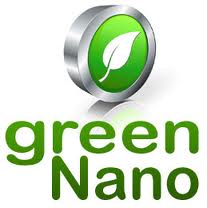“We are on unsustainable path. It is not as though nanotechnology will be an option; it is going to be essential for coming up with sustainable technologies”.
Green nanotechnology refers to the optimum use of nanotechnology to enhance the environmental sustainability of processes producing disastrous health and environment effects. It also refers to the use and synthesis of the products of nanotechnology to enhance sustainability.
It has been aptly described as the development of clean technologies, “to minimize potential environmental and human health risks associated with the manufacture and use of nanotechnology products, and to encourage replacement of existing products with new nano-products that are more environmentally friendly throughout their lifecycle.”
Green nanotechnologies that benefit environment could use nanotechnology i.e a technology which utilises materials at the scale of nano, to boost the performance. In other words, nanotechnology could help us make every atom count. For example by allowing us to create ultra efficient catalysts, detoxify wastes, assemble useful molecular machines and efficiently convert sunlight into energy. It could potentially contribute to long term sustainability for future generations, as more green products and green manufacturing processes replace the old harmful and wasteful ones.
Green nanotechnology involves two separate but related goals. On the one hand, the remarkable characteristics possible at the nanoscale promise myriad ways of making existing products and processes safer and more sustainable. On the other, researchers are increasingly finding ways to render nanotechnology less toxic throughout its life cycle.
Nano-enhanced Clean up technologies:
- The high profile problem of arsenic contamination in deeper levels of ground water, which causes serious arsenic poisoning to large number of people can be eradicated with the use of nanotechnologies. Magnetic nanoparticles could become an important green tool for removing arsenic from drinking water as they bind strongly and specifically to arsenic and can be separated out of solution using magnets.
- To effectively degrade heavy metals and organic solvents from water, zerovalent nanoparticles of iron and magnesium are being used effectively which provides an easy way through to curb this problem and also with minimum resources being used.. For example, nanoscale water filtration systems that transform contaminated, brackish or wastewater into drinking water by pressure-filtering it through pores too small for bacteria or viruses have been in use for more a decade
- To save our aquatic life nanotechnology has contributed by developing polymer nanospheres which offers a new way to detect hazardous material in aquatic environment by sensing at level of parts per billion(ppb) the pollutants.

Nano-enhanced energy technologies
Nanotechnology promises to improve our environmental outlook by getting us more bang for our energy buck and reducing our reliance on fossil fuels. Vehicles constructed even partially from nanomaterials can be lighter, and therefore more fuel efficient, without sacrificing strength or safety. Nano-enhanced cars are likely to be popular with those consumers who prefer to spend less money at the gas pump and less time washing their cars and replacing worn tires. People might feel these cars are safer to drive in bad weather because the coated windshields improve visibility during rainstorms. At the same time, such vehicles could broadly benefit society by helping to prevent air pollution, reduce energy use and minimize waste. That is green nano vision.
Green machines like hybrids and hydrogen vehicles stand to benefit even more. Engineers are already developing fuel cells (which can be used to convert chemical energy to electrical energy and serve as continuous source of energy) packed with carbon nanotubes to store hydrogen and increase reactivity. Expensive platinum which was the hydrogen fuel cell catalyst will now be replaced by carbon nanotubes , driving down costs.
Nanotechnology has your energy needs covered at home and in the office as well with the help of nanophotonics which is the study of light’s behaviour at the nanoscale. Researchers have developed windows, paints and film coatings that they can “tune” to reflect or transmit specific wavelengths of solar radiation, including the infrared energy that we experience as heat. It’s like turning your whole house into a sun shade during the summer and a space blanket in the winter.
More efficient technology like nanoelectronics has come up that will translate into gizmos, that gulp less energy and store it more efficiently — a real boon in our gadget-gonzo age.
Farther up the energy pipeline, nanoscience offers hope for amping up alternative energy sources. Solar panels printed using nanoparticles require fewer components to operate, henceforth there is less to repair, maintain or later bury in a landfill. With lower operational costs, such panels can output less power and still be profitable. Researchers have also dreamed up a way to extract energy from the salinity difference between seawater and river water. The technique relies on batteries made up of electrodes bristling with nanorods.
It is well said that —The economics of green nanotechnology depends on market pull. If clean technologies are valued by consumers, they will send positive market signals that help drive development and accelerate commercialization.
All in all “Nanotechnology offers us the opportunity to make products and processes green from the beginning. We simply cannot let this opportunity pass by”


Leave a Reply